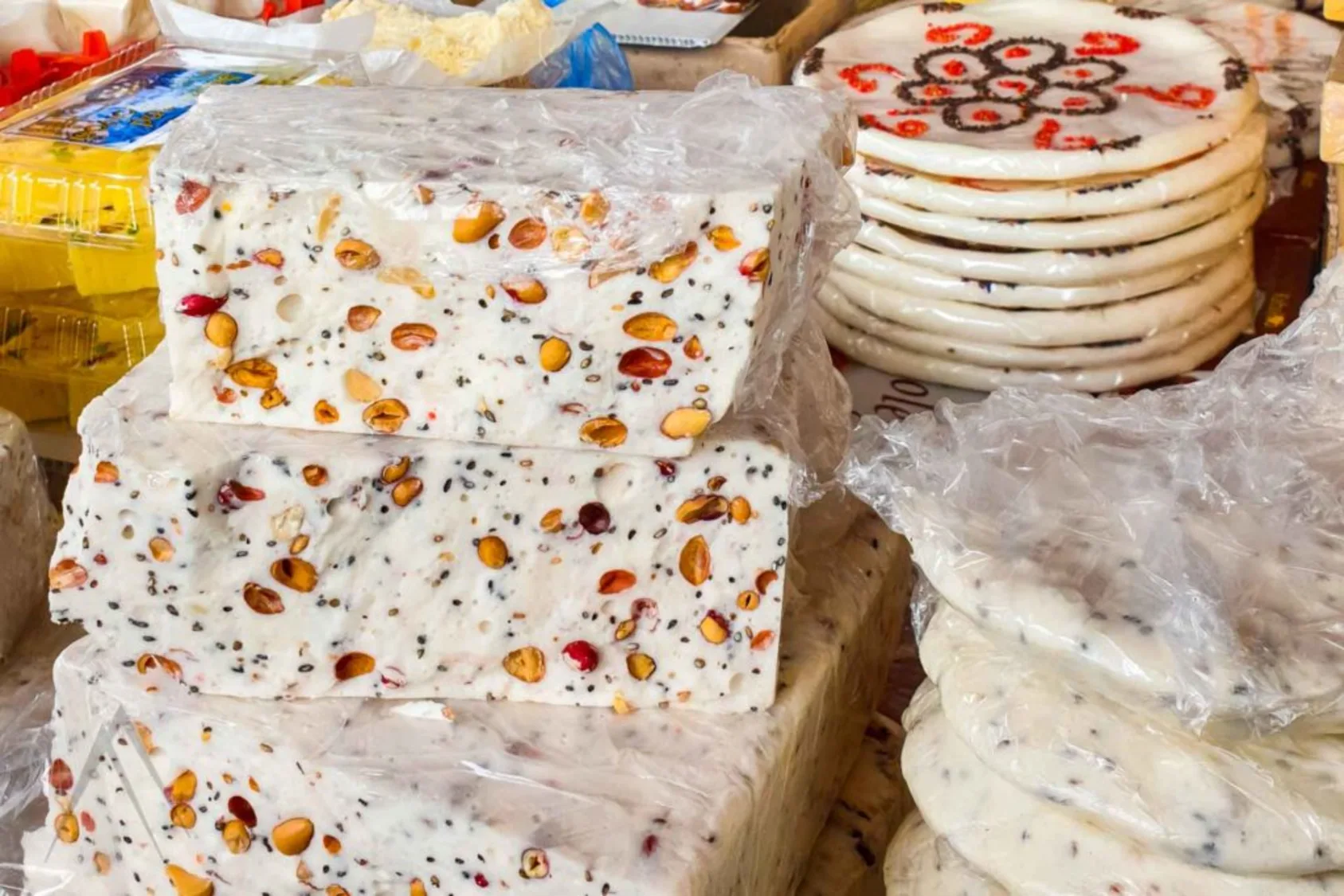
Halva
A dense, sweet confection made from flour, sugar, and oil, often flavored with nuts or dried fruits. A popular dessert in Uzbek cuisine.
Ingredients
- •Wheat flour
- •Sugar
- •Vegetable oil
- •Nuts
- •Cardamom
- •Dried fruits
Instructions
Toast Flour
Brown flour in oil until golden
Make Syrup
Prepare sugar syrup separately
Combine
Mix flour mixture with syrup
Set
Let cool and set before cutting
Halva is a beloved sweet confection that holds a special place in Uzbek cuisine. This dense, rich dessert is made primarily from toasted flour, sugar, and oil, with various nuts and dried fruits added for extra flavor and texture. Unlike the tahini-based halva common in other parts of the Middle East, Uzbek halva has a unique flour-based preparation method that gives it a distinctive taste and texture.
The art of making halva has been passed down through generations in Uzbekistan, with many families having their own closely guarded recipes. Traditionally, it was prepared for special occasions and celebrations, though today it's enjoyed year-round and is a popular gift during holidays and family gatherings.
Making traditional Uzbek halva requires skill and patience. The process begins by slowly browning flour in oil until it reaches a perfect golden color - a crucial step that gives the halva its characteristic nutty flavor. Meanwhile, a sugar syrup is prepared separately, often infused with cardamom for extra aroma. The real artistry comes in combining these elements at just the right temperature and consistency. The mixture is then enriched with nuts (commonly walnuts or almonds) and sometimes dried fruits, before being allowed to set.
While the basic recipe remains consistent, there are numerous regional variations across Uzbekistan. Some versions incorporate pistachios or hazelnuts, while others might include raisins or dried apricots. Modern adaptations might use different types of flour or add chocolate, though purists prefer the traditional recipe. The texture can also vary from soft and fudge-like to more crumbly, depending on the proportion of ingredients and cooking method.
In Uzbek homes, halva is typically served in small, diamond-shaped pieces alongside green tea. It's often presented as part of a dessert spread during traditional ceremonies and is particularly popular during afternoon tea gatherings. Some people even enjoy it for breakfast, paired with fresh bread and tea.
While delicious, halva is quite calorie-dense due to its high sugar and oil content. A typical serving (about 50g) can contain around 220-250 calories. It's also worth noting that the dessert contains gluten from the wheat flour and nuts, so it's not suitable for those with related allergies or sensitivities. However, when enjoyed in moderation, halva can be part of a balanced diet, providing energy and some nutritional benefits from the nuts and dried fruits it contains. The dessert can be stored for several weeks in an airtight container, though its texture is best within the first week of preparation.
